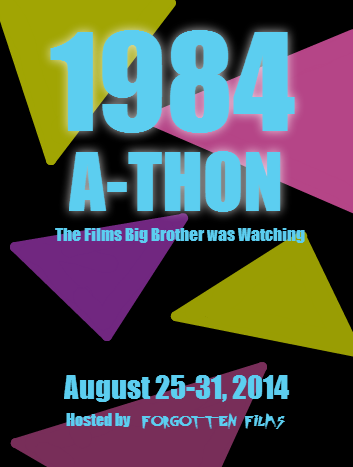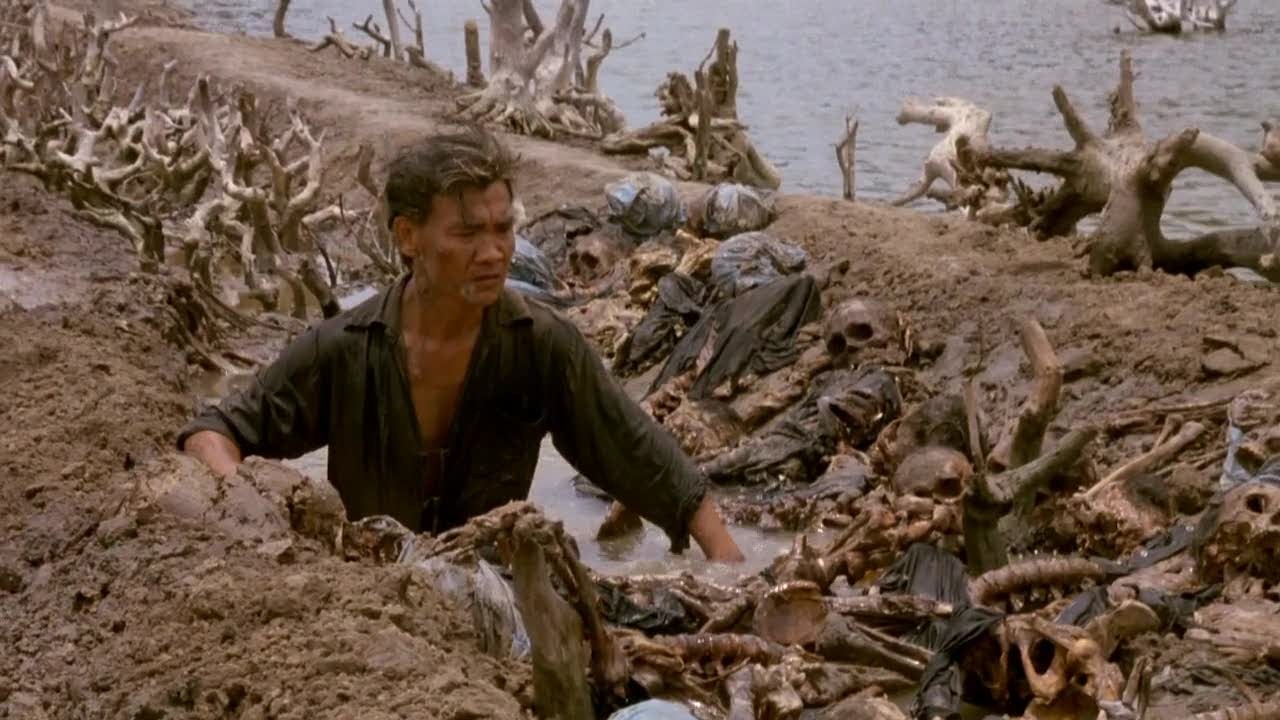 My review of “The Killing Fields” is a contribution to the 1984 blogathon, hosted by Forgotten Films. 1984 was a great year for movies, and it seems fitting to honor some of the best of them now, since it is 30 years later. I’m happy to be doing a review of “The Killing Fields,” as it is a worthy and admirable film, and one that I would consider to be a modern classic.
My review of “The Killing Fields” is a contribution to the 1984 blogathon, hosted by Forgotten Films. 1984 was a great year for movies, and it seems fitting to honor some of the best of them now, since it is 30 years later. I’m happy to be doing a review of “The Killing Fields,” as it is a worthy and admirable film, and one that I would consider to be a modern classic.
At the same time as the Vietnam War, there was another even more bloody and deadly conflict being fought next door, in nearby Cambodia. The communist party called Khmer Rouge was as ruthless as they come, and are responsible for the Cambodian genocide, where it is estimated that between 1-3 million Cambodian nationals were killed. It is these events that “The Killing Fields” conveys, based on the experiences of American journalists Sydney Schanberg (Sam Waterston) and Al Rockoff (John Malkovich), and Cambodian journalist Dith Pran (Haing S. Ngor), who also acts as their interpreter.
“The Killing Fields” is more intimate than your usual war-time drama, as it shows the experiences of the war through the eyes of only a select few, mostly of journalists Sydney and Pran. The two look on helplessly as they witness entire villages being torn apart, soldiers being executed, children crying out in pain, and, at one point, thousands of miscellaneous body parts jumbled up together alongside a murky swamp, which is where the term “the killing fields” first originated. It is a struggle just to stay alive while they try to document the war, and Sydney and Pran have several close calls with the Khmer Rouge, who do not want their actions being photographed.
The beautiful landscape of Cambodia is portrayed with lush, green mountains, and families living in small, peaceful villages. This is immediately clashed with the brutality and endless violence of the civil war. Yet, it is portrayed exactly as it must have happened, and at times “The Killing Fields” plays almost like a documentary. This is in no small part due to the expert cinematography, which will sometimes jump from a landscape view to a close-up of tragedy, such as an injured boy covered in blood. It is hard to watch this film and not feel simultaneously horrified and sympathetic for the millions of lives that were needlessly lost.
As mentioned, the main subjects of the film are American journalist Sydney Schanberg, portrayed by Sam Waterston, and Cambodian journalist Dath Pran, portrayed by Haing S. Ngor, although John Malkovich also gets his moments as Al Rockoff. Sam Waterston, who people may know as Jack McCoy from Law & Order, gives a strong, commanding performance of a man that is clearly more concerned about telling a story than of his own personal safety. He also forms a strong bond with Dath Pran, who, as a Cambodian nationalist, is able to pull them out of a few tight spots along the way. Without the other, it is clear that the two would not have made it through the war. Haing S. Ngor, who was himself a survivor of the Cambodian genocide, had never acted in a movie before. Yet, you wouldn’t know it after seeing his presence on screen. It is likely that living through the actual event enabled him to get more of an emotional range, and others must have thought so as well, since Ngor was presented with an Oscar for the performance. He remains one of the only nonprofessional actors to win the award.
The Cambodian genocide is an event that people have likely heard of, although they may know nothing more about it, such as the approximate number of people killed. Some estimates put the total number of deaths at more than 3 million, from the causes of starvation, disease, and murder. Although “The Killing Fields” shows the stories of only a few journalists, it also shows just how senseless and ugly the war was through their experiences. It is a moving tribute to one of the worst genocides in history.

2:11 pm on August 26th, 2014 1
This is a great movie. If you haven’t seen it, a terrific companion piece to “The Killing Fields” is Jonathan Demme’s film of the Spalding Gray monologue “Swimming to Cambodia.” The late Gray plays the U.S. Ambassador’s aide in the movie, and in “Swimming…” delivers a wildly brilliant monologue about the making of the film and sundry other eccentric adventures. I’ve probably seen that even more than “Killing Fields.” Some time ago, I wrote about it for our site here: http://www.moviefanfare.com/talking-pictures-last-swimming-to-cambodia/
2:30 pm on August 26th, 2014 2
Hi George, I haven’t had a chance to see that film, but I have heard good things about it. Sounds great, I’ll have to check out your review. Thanks for the recommendation!
8:30 pm on August 26th, 2014 3
[…] – Cinema Escapes reviews Academy Award nominee The Killing Fields. […]
6:17 pm on August 27th, 2014 4
This sounds like a very tough film to watch, but one that should be watched nonetheless. I can’t imagine how horrifying it would be to live through that kind of experience.
Thank you for a wonderful and thoughtful review.
6:26 pm on August 27th, 2014 5
Silver Screenings, thanks for the the comment. It is a very powerful movie, but yes it is also very tough, so be prepared if you decide to watch it!
1:46 am on September 4th, 2014 6
Great film, could be read with the new memoir of a survivor of this carnage if you want a deeper look at the Cambodian genocide: “Surviving Year Zero: My Four Years Under the Khmer Rouge” just published a month ago.